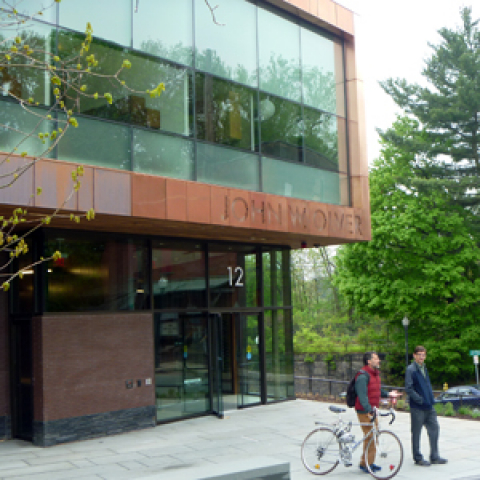

Our Vision
NEEP’s Buildings and Communities Solutions initiative seeks to…
- Help states and communities save energy in buildings
- Drive the public sector to lead by example
- Pave the way for zero energy buildings
- Healthy, livable environments
The Need
Buildings account for over 30 percent of the region’s total carbon emissions, providing a significant opportunity to reduce emissions from the built environment.
The Goal
NEEP’s Buildings and Communities Solutions team is working with stakeholders throughout the region to achieve a shared goal of 80 percent reduction in greenhouse gas emissions by 2050.
The Solution
NEEP provides a regional perspective to advance energy efficiency and reduce carbon emissions in public buildings through stakeholder engagement, best-practice sharing, and the development of resources. The four project areas that the Buildings and Communities Solutions team focuses on are:
Building Energy Codes
Building codes are the base for energy efficient buildings, dictating the minimum level of energy efficiency in new buildings and in buildings retrofits. NEEP helps the Northeast and Mid-Atlantic reduce its energy use and carbon emissions by providing states with resources to develop, implement, and comply with energy codes.
Project Objectives
- Increase state and local adoption and enforcement of the latest national model energy code and stretch codes
- Additional states and efficiency programs support energy code compliance studies and programs with energy savings attribution for increased compliance rates
- Additional state and local governments adopt plans or policies to achieve zero carbon and zero energy building codes by 2040 or sooner
Visit the Energy Codes page for information on code attribution, the model progressive code, and more related resources.
Building Energy Rating and Labeling
Understanding a building’s energy usage portfolio is an important factor in driving energy retrofits, reducing costs, and improving sustainability.. Building energy rating and labeling provides a way for building owners, managers, and tenants to understand a buildings energy consumption and quantify the building’s efficiency in the market. NEEP provides technical assistance and best practice resources to state and local government leaders to adopt and implement these policies.
Project Objectives
- Additional jurisdictions adopt building benchmarking or residential labeling ordinances.
- Additional states, cities, and municipalities lead-by-example with building energy benchmarking
Visit the Energy Labeling page for information on benchmarking and disclosure best practices and policies, and building asset rating.
High Performance Buildings
High performance buildings are at the forefront of a high performing community and allow states and municipalities to lead-by-example through the construction, operations, and maintenance of highly efficiency or zero energy buildings. An important aspect of this project are high performance schools, which incorporate measured to ensure healthy indoor environmental quality alongside an efficiency use of energy, water, site, and materials. NEEP provides best practice guidance, peer exchange, and technical assistance for schools and public buildings.
Project Objectives
- Increase in number of buildings that are built to or put on a pathway to zero energy
- Increased workforce for the operation and maintenance of high performance buildings
Visit the high performance schools webpage or the zero energy buildings webpage for more information.
High Performance Communities
The high performance communities is working towards resilient, energy efficiency, and low-carbon communities throughout the region. NEEP provides regional tools and resources, stakeholder engagement, peer exchange, training and technical support to assist communities to set and achieve efficiency and carbon reduction goals. NEEP does this through lead-by-example initiatives, high performance and zero energy schools and facilities guidance and tours, building energy rating and performance initiatives, and advanced energy codes.
In 2018 NEEP launched the Community Action Planning for Energy Efficiency (CAPEE) tool, and interactive online platform and technical assistance resource designed to help small-mid size communities establish and achieve energy and carbon reduction goals.
Project Objective
- Increase the number of communities that commit to carbon and energy-use reduction goals
Visit the high performance communities webpage for more information.
